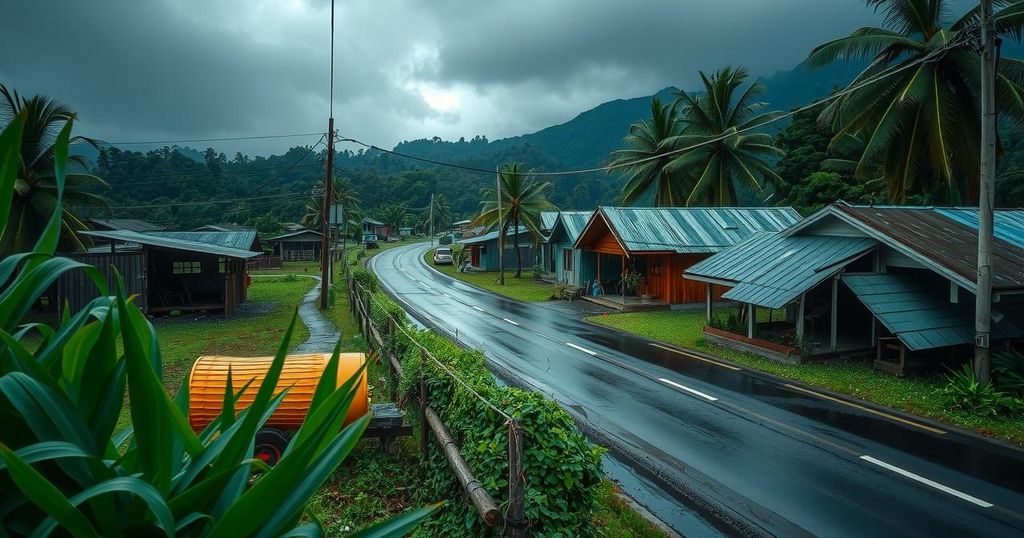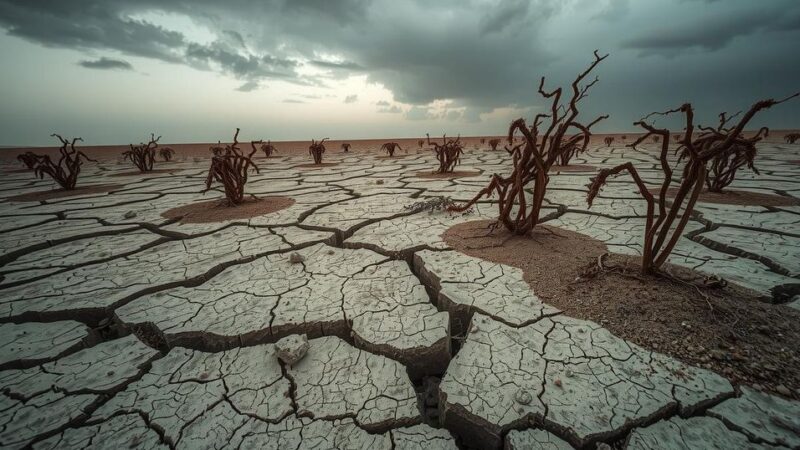Tropical Storm Sara resulted in over 1,700 Honduran communities becoming isolated due to severe flooding. With one confirmed fatality and more than 110,000 individuals affected, the storm caused significant infrastructure damage, including the destruction of bridges and homes. Forecasts indicate weakening as it moves into Mexico, but the intensity of storms is attributed to climate change.
The substantial rainfall attributed to Tropical Storm Sara has led to the isolation of over 1,700 communities across Honduras. This slow-moving storm, which originated in the Caribbean Sea, has unleashed significant flooding, particularly in northern regions, for an extended duration. Although the official death toll stands at one, an estimated 110,000 individuals have been adversely impacted, with widespread damage to infrastructure, including homes and transportation routes. As the storm progresses into Mexico, weakening is anticipated, yet the damage inflicted upon Honduras appears severe. The torrential downpour resulted in approximately 500mm (19.7 inches) of rain in some locations, causing rivers to overflow, leading to the destruction of nine bridges and damage to an additional nineteen. Landslides have rendered several highways impassable, complicating relief efforts. Honduran President Xiomara Castro issued early warnings to residents living near rivers, advising them to seek safer accommodations. Cost assessments indicate that more than 2,500 residences suffered damage, while over 200 homes were completely destroyed. Tropical Storm Sara is notably the 18th named storm of the current Atlantic hurricane season, manifesting as the third storm this month alone, following Hurricane Rafael’s impact on Cuba less than two weeks prior. Meteorological analyses attribute the escalating intensity of storms like Sara to rising sea surface temperatures, with climate change exacerbating their potential for destruction. According to Kevin Trenberth, a distinguished scholar at the National Center for Atmospheric Research, “While hurricanes and tropical storms occur naturally, human-caused climate change is supercharging them and exacerbating the risk of major damage.”
Tropical storms and hurricanes are cyclical phenomena experienced during specific seasons in the Atlantic region. They are influenced by various climatic factors, including sea surface temperatures. The emergence of storms like Sara and Rafael highlights the potential for significant weather events in areas such as Central America, where geography exacerbates flooding risks. As climate change continues to influence weather patterns, the intensity and frequency of these storms are increasing, prompting concerns among scientists and emergency management officials.
In summary, Tropical Storm Sara has caused considerable disruption in Honduras, isolating numerous communities and damaging extensive infrastructure. While the storm is expected to weaken as it moves into Mexico, the aftermath in Honduras necessitates urgent attention and recovery efforts. The growing frequency and severity of such storms, intensified by climate change, underline the need for improved preparedness and resilience in affected areas.
Original Source: www.bbc.com







